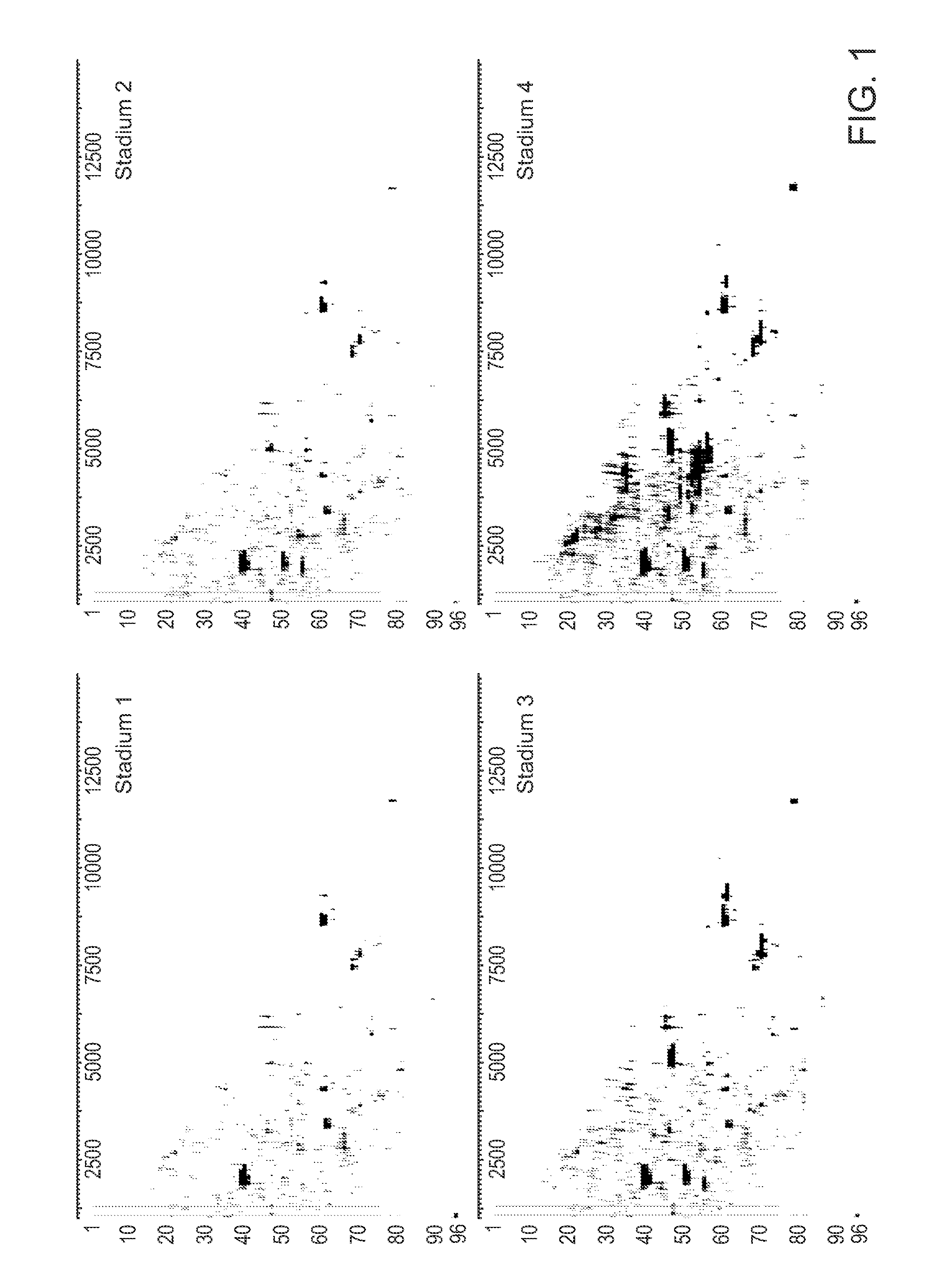Diagnosis and monitoring of renal failure using peptide biomarkers
- Summary
- Abstract
- Description
- Claims
- Application Information
AI Technical Summary
Benefits of technology
Problems solved by technology
Method used
Image
Examples
example 1
Study Design and Probands
[0089]Healthy adult humans and humans suspected or known to suffer from renal failure of different stages were enrolled in this study after they provided written informed consent. Laboratory and other parameters, such as body weight, height, age, sex, creatinine in serum and / or urine, and protein in serum and / or urine, were measured. If no 24 h urine sample was available, the creatinine clearance was calculated by use of the Cockcroft formula. Laboratory values determined were leukocytes, nitrite, pH, protein, glucose, ketone, urobilinogen, bilirubin, blood and hemoglobin presence in urine measured using urine sticks. Not all measurements were performed on all subjects. In addition, the past medical history was considered.
[0090]The samples were subjected to a standardized protocol including addition of high concentrations of chaotropic salt and ultra filtration, followed by reverse-phase chromatography, followed by MALDI-mass spectrometry of individual fract...
example 2
Sample Collection and Plasma Preparation
[0091]Blood samples were drawn from subjects by venipuncture from a cubital vein, using a 20 gauche needle and a butterfly system with a maximum tubing length of 8 cm. If a tourniquet was applied, it did not remain in place for longer than 1 min. As soon as the blood flowed into the container the tourniquet was released partially. Prior to collecting a blood sample for subsequent plasma preparation, the blood sampling device was flushed with a few ml of the blood not used for plasma preparation. Subsequently, blood was drawn into standard EDTA-containing syringes (e.g., 9 ml EDTA-Monovette, Sarstedt, Nümbrecht, Germany). Within 30 min. of the blood drawing, the blood sample was centrifuged for 10 min. at 2000×g at room temperature. After centrifugation, the plasma was transferred to a fresh tube and subjected to a second centrifugation for 15 min. at 2500×g at room temperature. The resulting, platelet-depleted plasma was transferred to a secon...
example 3
Ultra Filtration of Plasma Samples in the Presence of Chaotropic Salt
[0093]After thawing in a water bath, the plasma samples were kept at room temperature until all proteins are re-dissolved. The sample (0.95 mL) was mixed with 3.92 mL of 8 M Guanidin hydrochloride solution, 0.08 mL peptide standard. The pH was adjusted to pH 2-3 by the addition of 0.018 mL of 30% [v / v] HCl. The diluted sample was centrifuged for 60 min. at 4000×g at 23° C. in an ultra filtration device (Amicon Ulta-15, Art. No. UFC 905096, Millipore, Bedford, Mass.). Prior to use, the ultra filtration devices were rinsed with water by adding 15 mL water into the device, centrifugation at 4000×g for 2 min. at 23° C., and discarding any water present in the device after this rinsing step. The final volume of 5.5 mL included 4.3 mL of the resulting filtrate (flow through of the ultrafiltration) diluted with 1.2 mL of 0.1% Tri-Fluor-Acetic Acid (TFA). This sample was stored at −80° C. until further analyzed.
PUM
| Property | Measurement | Unit |
|---|---|---|
| Size | aaaaa | aaaaa |
| Radiopacity | aaaaa | aaaaa |
| Radioactivity | aaaaa | aaaaa |
Abstract
Description
Claims
Application Information
 Login to View More
Login to View More - R&D
- Intellectual Property
- Life Sciences
- Materials
- Tech Scout
- Unparalleled Data Quality
- Higher Quality Content
- 60% Fewer Hallucinations
Browse by: Latest US Patents, China's latest patents, Technical Efficacy Thesaurus, Application Domain, Technology Topic, Popular Technical Reports.
© 2025 PatSnap. All rights reserved.Legal|Privacy policy|Modern Slavery Act Transparency Statement|Sitemap|About US| Contact US: help@patsnap.com


